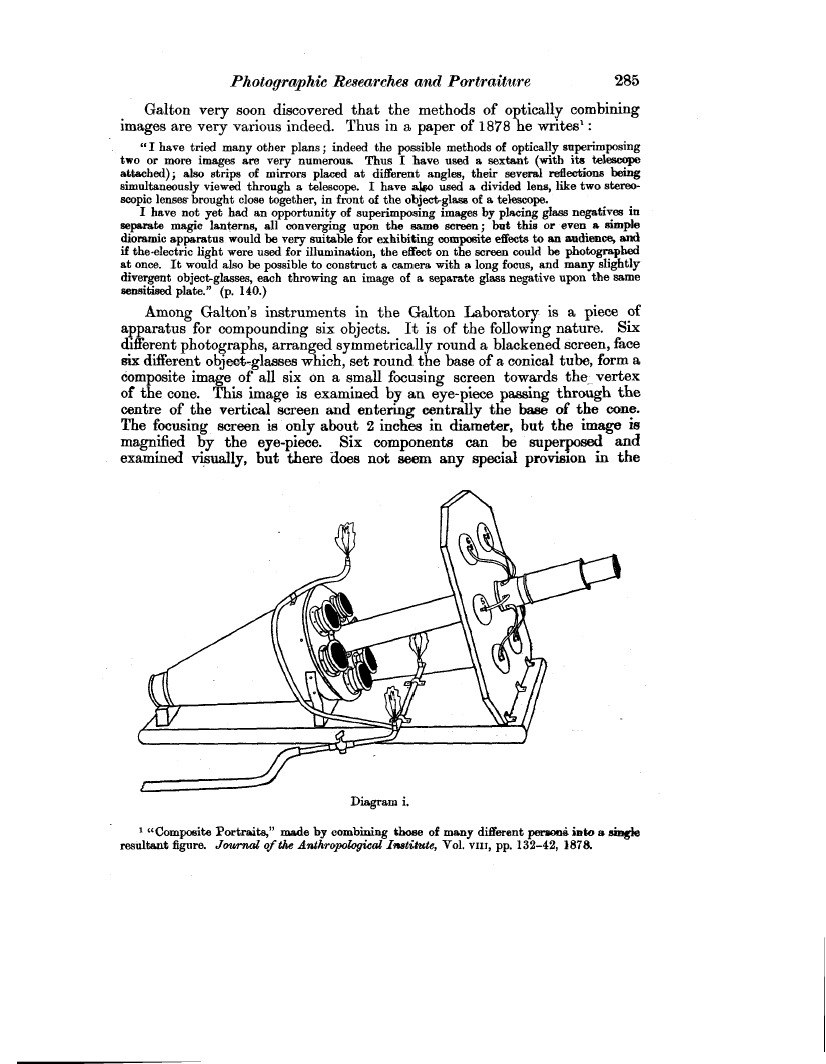Photographic Researches and Portraiture 285
Galton very soon discovered that the methods of optically combining images are very various indeed. Thus in a paper of 1878 he writes'
"I have tried many other plans; indeed the possible methods of optically superimposing two or more images are very numerous. Thus I have used a sextant (with its telescope attached); also strips of mirrors placed at different angles, their several reflections being simultaneously viewed through a telescope. I have algo used a divided lens, like two stereoscopic lenses brought close together, in front of the object-glass of a telescope.
I have not yet had an opportunity of superimposing images by placing glass negatives in separate magic lanterns, all converging upon the same screen ; but this or even a simple dioramic apparatus would be very suitable for exhibiting composite effects to an audience, and if the-electric light were used for illumination, the effect on the screen could be photographed at once. It would also be possible to construct a camera with a long focus, and many slightly divergent object-glasses, each throwing an image of a separate glass negative upon the same sensitised plate." (p. 140.)
Among Galton's instruments in the Galton Laboratory is a piece of apparatus for compounding six objects. It is of the following nature. Six different photographs, arranged symmetrically round a blackened screen, face six different object-glasses which, set round the base of a. conical tube, form a composite image of all six on a small focusing screen towards the-_ vertex of the cone. This image is examined by an eye-piece passing through the centre of the vertical screen and entering centrally the base of the cone. The focusing screen is only about 2 inches in diameter, but the image is magnified by the eye-piece. Six components can be superposed and examined visually, but there does not seem any special provision in the
Diagram i.
1 "Composite Portraits," made by combining those of many different persons into a single resultant figure. Journal of the Anthropological Institute, Vol. viii, pp. 132-42, 1878.

